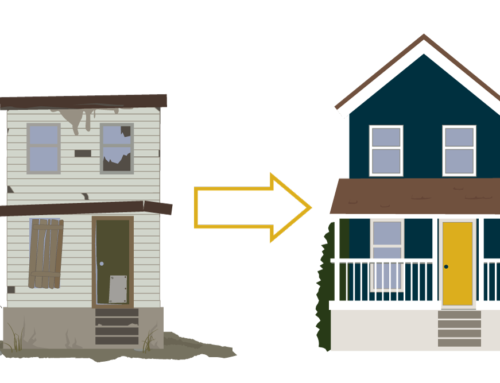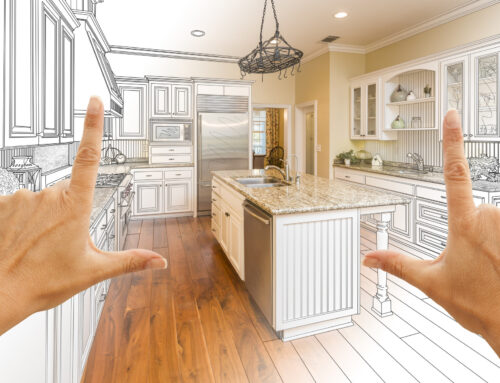In 2020, house-flipping profits were the highest they had been in the last 20 years. Though recent market trends have made it harder to find inexpensive homes to flip, it’s become one of the easiest ways to make a quick profit in the real estate market.
If you’ve considered flipping a house before, you’ve probably also considered house-flipping mistakes. Forgetting to take things like important house repairs, necessary upgrades, or even home staging into account all have the potential to cost you money when it’s finally time to sell.
But there are ways to avoid making these mistakes.
We’re here to tell you all about them and help you learn to avoid them. Read on to learn seven of the most common house-flipping mistakes and how to avoid them.
1. Not Setting a Budget
If you’ve never renovated or flipped a home, it can be difficult to know exactly how much you’ll need. While the exact cost will depend on the project, it’s certainly possible to estimate what you’ll be paying in renovations by simply looking around the property.
It’s also smart to have the property inspected before purchasing; that way, you can have a professional’s opinion on the property.
2. Miscalculating Repairs
While you can estimate how much money external repairs are going to cost, you can’t know everything going on on the inside of a house.
While it’s important to spend money to make it, you don’t want to go so overboard with the interior and exterior design that you forget to take those unexpected repairs into account.
3. Not Following a Plan
Besides not having enough money, not having a plan is the biggest mistake you can make regarding house-flipping. Once you get started, you won’t know what to tell your contractor, supplier, or any of the other people you’re working on your project with.
If you’re working with multiple people or teams, you’re going to need to create a plan that effectively allows everyone to get their job done smoothly. Having contractors present on the same day as you’re having an interior designer come in might not be ideal.
When you’re getting quotes and different inspections done, those professionals also give you a time estimate. Take these time estimates into account when you’re creating your remodeling plan.
4. Misunderstanding the Market
To be successful, you have to know the market of the neighborhood you’re buying in. Understanding how to buy the right property for the right price in the right location is crucial for house-flipping.
Chances are — unless you get really lucky — you’re not going to buy a house for $70,000, flip it, then sell it for $210,000 in a neighborhood where the houses are usually sold for $100,000.
To play your cards right, you’re going to have to know which renovations to make and which to skip. You’re also going to have to understand proper zoning and tax laws. The proper education and research can help you here, but so can a solid team backing you the entire way.
With companies like Zillow beginning to invest in house-flipping projects, competition is only becoming more fierce, and it’s up to you to stay on top of the market.
5. Overdoing the Improvements
This goes hand-in-hand with misunderstanding the market. When it comes to renovations, you’re going to want to make sure they make sense for the neighborhood the property is in.
In an older neighborhood, you’re not going to have to pull out the bells and whistles with your renovation. While going with solid stone countertops is almost always a good idea, you might not need to install a three-car garage just because you have the money.
Make the wrong renovations, and you’re almost guaranteeing that you won’t get any of your investment back.
6. Listing the Property for the Incorrect Amount
This is another place where you have to take the neighborhood, market, and necessary renovations into account.
Overpricing your listing will ensure that it never sells, but underpricing means you’re not going to make your money back. Learn the best market value you’ll be able to get for the property, and then decide on a price from there.
7. Patience is a Virtue
Growing impatient is the worst possible thing you can do for your house flip. Waiting for the right property, the proper investors, the best contractor, and even doing things yourself when you can save you money in the long run.
It’s also going to ensure that you make the most out of your investment and that you’re not wasting your time.
The biggest thing to recognize is that your profit margins are not always going to be huge. Not every house flip will be a major success, but practice and patience is the best way to ensure that you’ll be getting the most out of each flip you undertake.
Avoid House-Flipping Mistakes to Save Yourself Money in the Long Run
When you follow these tips to avoid house-flipping mistakes, you’re less likely to make costly mistakes that result in a delayed sale or an expensive repair. You might spend a little more on quality in the beginning, but it’s only going to save you money in the long run.
While you should stick to your budget as closely as possible, it’s also important to leave a bit of wiggle room if unexpected things come up or you’d like to opt for higher quality parts and services.
If you need help getting started on your house-flipping journey, contact us today.






Stay In Touch